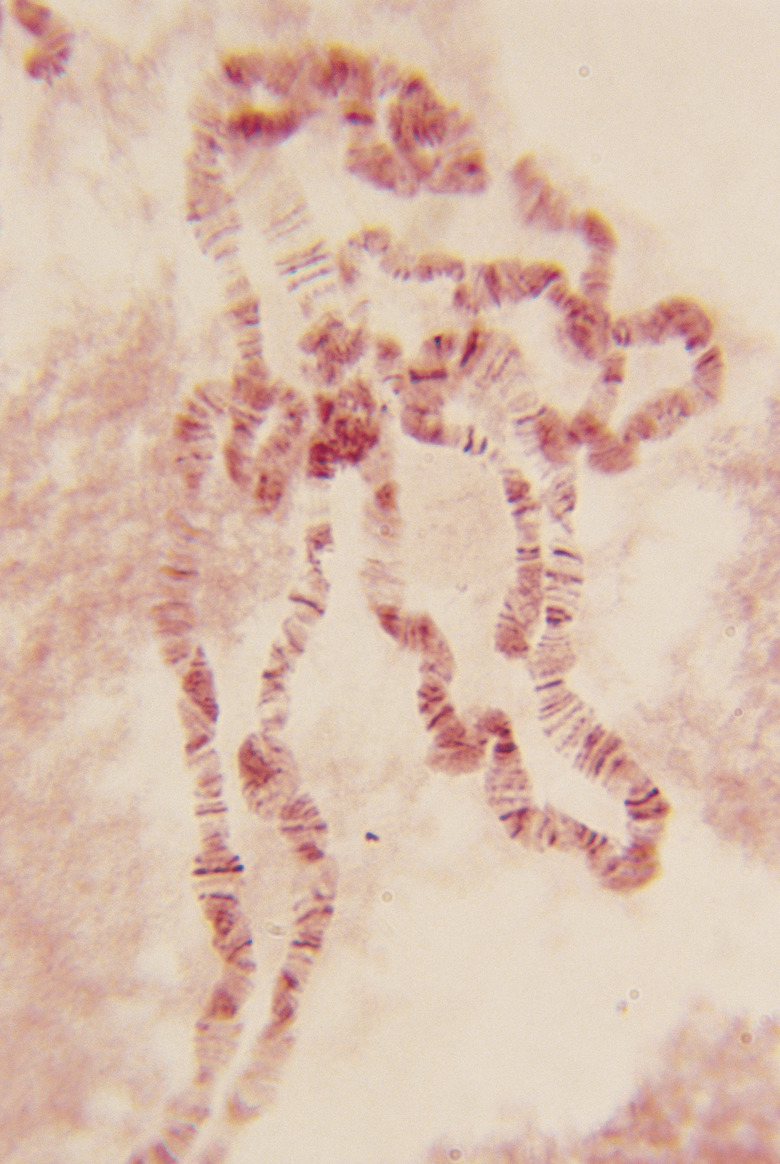What Genotype Are Women?
Almost all living organisms pass DNA on to their offspring when they reproduce. The particular set of DNA that any specific organism – an individual human, for example – inherits is called a genotype. The term genotype can also refer to only a part of the DNA sequence that is inherited. Essentially, the genotype is the behind-the-scenes instruction manual for the organism. This is different from a phenotype, which works as the expression of the organism's genotype. The phenotype is the manifestation of the DNA code. For a phenotype example, consider a trait as microscopic as blood type, or traits as large-scale a flower's petal colors, or even whether a person dislikes the taste of cilantro.
Using the definition of "genotype" that refers to a relevant section of the DNA sequence inherited by an organism, the genotype of female humans is XX, as opposed to male humans' genotype XY. Although the genotype of women might seem simple on its face, there are many factors that make the phenotypic expression of the sex chromosomes a complex matter.
TL;DR (Too Long; Didn't Read)
While genotype refers to DNA, phenotype refers to the expression of that DNA in the physical manifestation of the organism. In humans, the section of the genotype that represents female sex is XX, and XY for males. Sexual characteristics arise in utero based on whether or not the Y chromosome is present to trigger a hormone release. While the sex chromosomes are simple, gender expression is not. Transgender and intersex people are an example of how genotypes do not necessarily match their phenotypes.
Sex Is Determined in Utero
Sex Is Determined in Utero
Humans reproduce sexually, creating gametes using the process of meiosis. These gametes are the ovum in females and the spermatozoa in males. A sperm cell and an egg join together to form a zygote. The only part of the human genome that is specific to the sex of the individual are the pair of sex chromosomes. The other 22 chromosome pairs are non-sex, or autosomal chromosomes, and for all people, each chromosome in the pair matches its partner. This is also true of the two X sex chromosomes that most females possess. Each gene is the same and in the same order on each chromosome in the pair. Human males receive one X chromosome from their mother and a Y chromosome from their father. The SRY-gene on the Y chromosome releases steroid hormones during embryonic development that stimulate the growth of male sex organs. The same does not happen to embryos that have two X chromosomes. Instead, the absence of these hormones triggers the female sex organs to develop.
Females Are Protected From Sex-Linked Traits
Females Are Protected From Sex-Linked Traits
The X chromosomes have thousands of genes on them. The Y chromosome is considerably shorter than the X chromosome, and only has a few genes on it. Many genes for sex-linked traits live on the X chromosome, such as the ability to see red and green. If this gene is defective, it can cause red/green colorblindness. Since the gene is recessive, females need a copy on both of their X chromosomes to be colorblind – in other words, they will not express the phenotype unless both copies of the recessive gene are defective. Since males have only one X chromosome, they need only one copy of the defective gene to be red/green colorblind. For this reason, most red/green colorblind people are male. There are over 1,000 known human sex-linked traits that primarily affect males, including hemophilia and many non-disease traits, such as male-pattern baldness.
The Nonbinary Nature of Female and Male Phenotype
The Nonbinary Nature of Female and Male Phenotype
While it is true that most people with XX genotypes are female and most people with XY genotypes are male, there are a great number of exceptions, and a growing understanding of the spectrum of lived experiences. Gender identity is one's sense of being male, female or nonbinary. Nonbinary is used as an umbrella term for gender identities that do not fit neatly into the male or female categories; for example, agender people do not have a gender. Nonbinary genders are themselves a kind of transgender identity. Other kinds of transgender identities include people who, at any point in their lives, realize that their gender identity does not match the gender they were assigned at birth. (For more information about gender identity, sexual orientation and related topics, please refer to the link in References.)
In addition, there are many intersex people whose genotypes and/or phenotypes are not clearly male or female. Some have a variety of chromosomal variations, such as three sex chromosomes instead of two, or a missing sex chromosome. Some have genitalia or other physical characteristics that are not clearly male or female. There are countless ways for intersex traits to manifest, suggesting that the spectrum between male and female is a broad one, both in terms of physical features and behavioral traits.
Cite This Article
MLA
E., Rebecca. "What Genotype Are Women?" sciencing.com, https://www.sciencing.com/genotype-women-12922/. 1 August 2018.
APA
E., Rebecca. (2018, August 1). What Genotype Are Women?. sciencing.com. Retrieved from https://www.sciencing.com/genotype-women-12922/
Chicago
E., Rebecca. What Genotype Are Women? last modified August 30, 2022. https://www.sciencing.com/genotype-women-12922/
